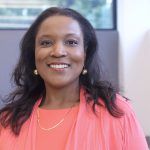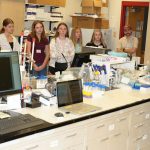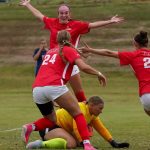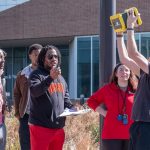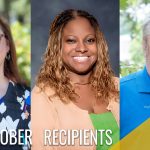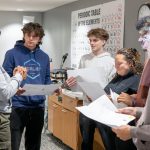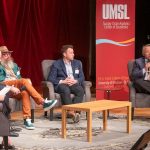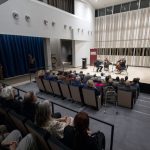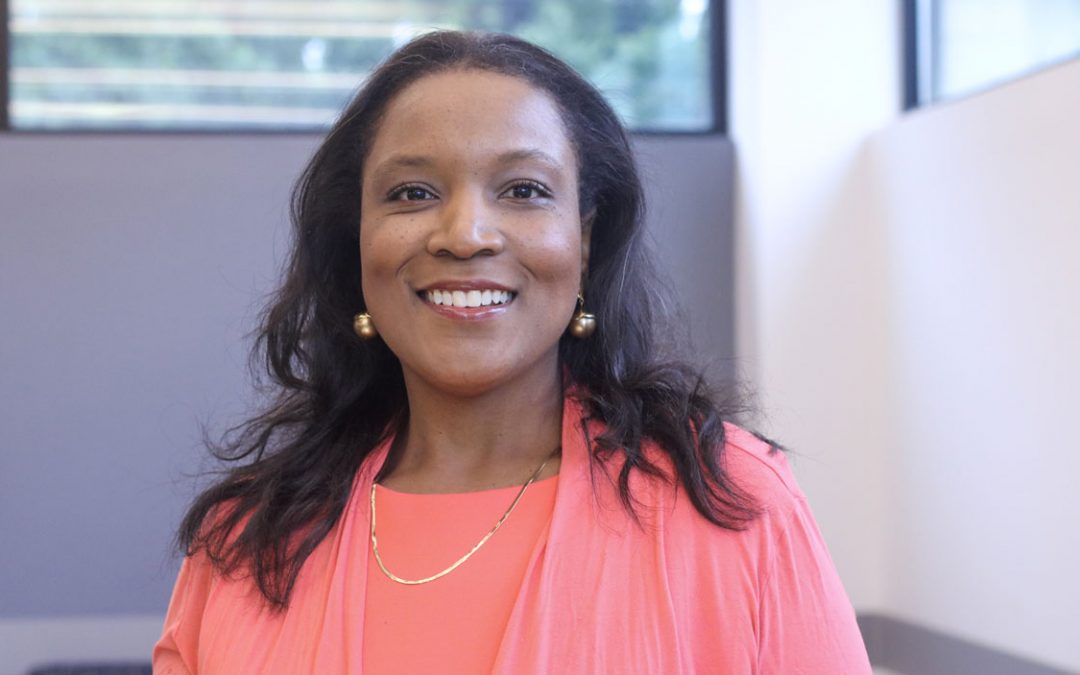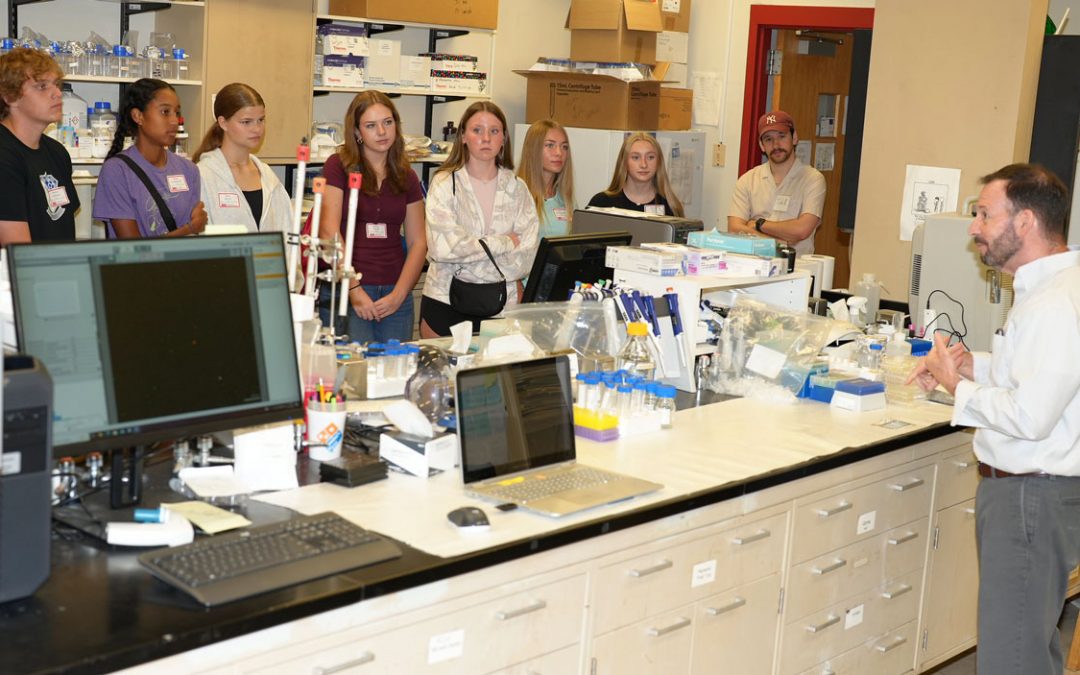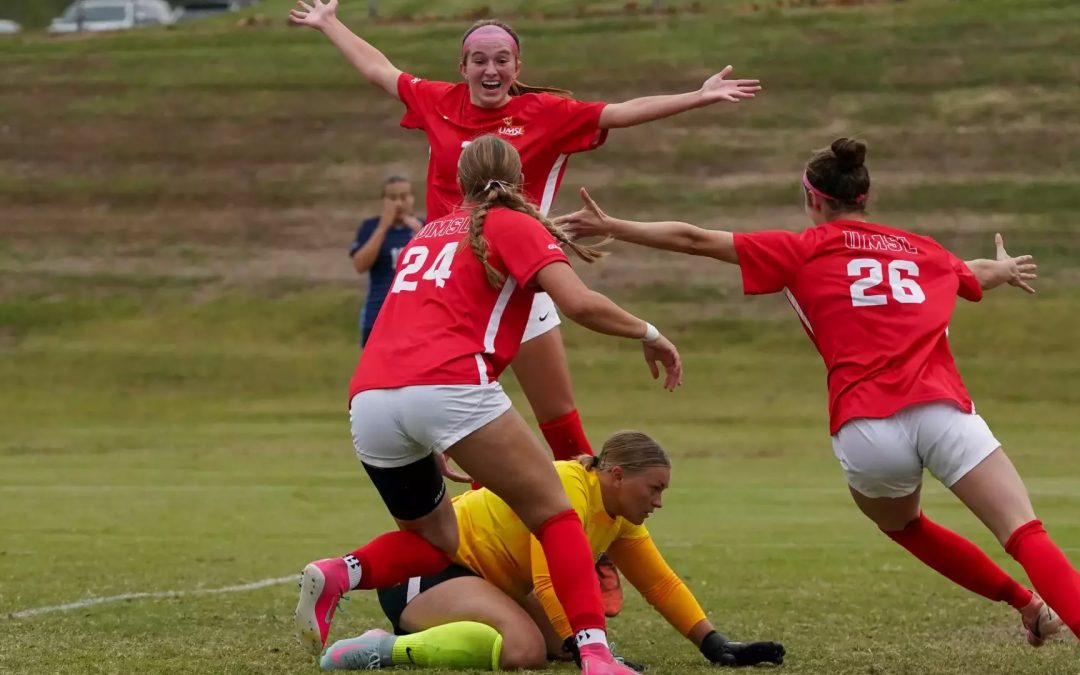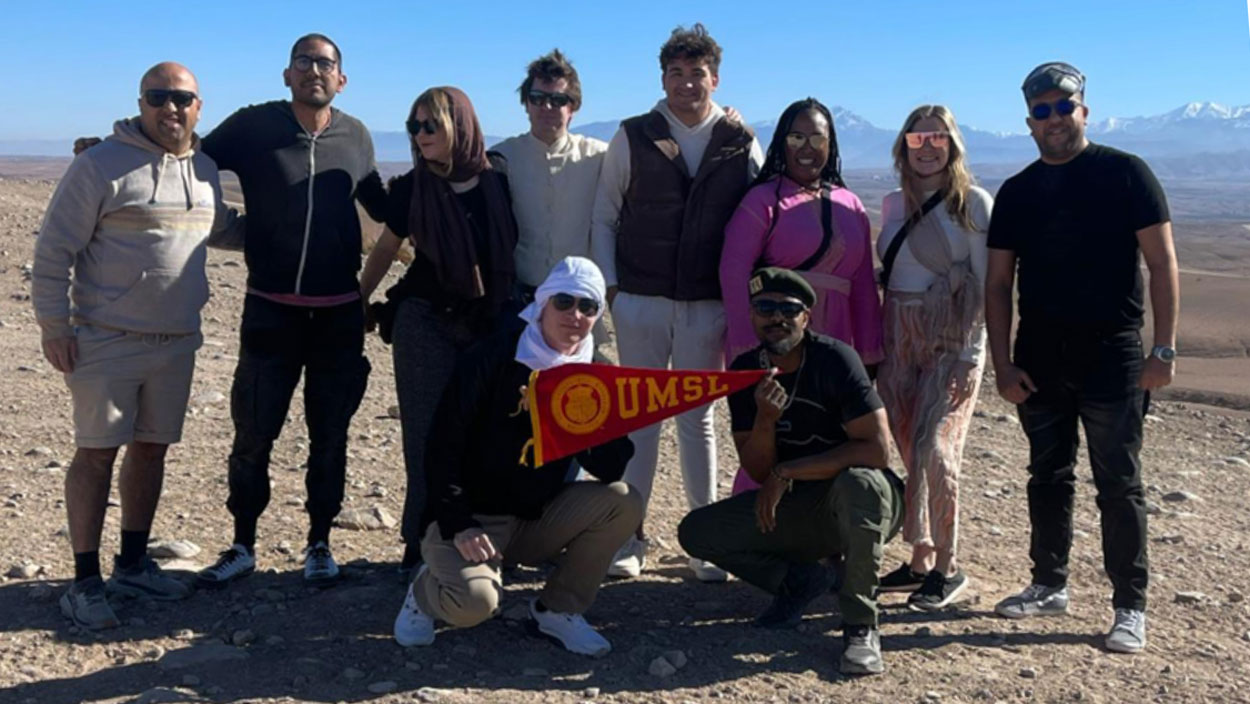
The study abroad program to Morocco and Spain included several opportunities to explore the culture and the countryside, such as this desert in Morocco. (Photo courtesy of Branyea Jones)
For the eight University of Missouri–St. Louis students on the study abroad program to Morocco and Spain this January, the journey represented an opportunity to push their own boundaries.
Sometimes, those boundaries stretched a little more than initially expected.
“I told myself going in that I wasn’t exploring any food outside of chicken and seafood, because that’s all I was comfortable with,” said Max Hood, a senior in the Pierre Laclede Honors College. “But in the medina – that’s what the markets are called in Morocco – I tried goat brain. I can say it is very good. I tried it on bread with some chili paste, and it was delicious.”
The study abroad program was organized by the UMSL Global Study Abroad Office in collaboration with the University of Missouri–Kansas City School of Law Continuing Legal Education Program. The group also included two UMKC law students, one undergraduate from the University of Missouri–Columbia and more than fifty practicing attorneys. Generous scholarships from the UMSL Study Abroad program made the trip affordable. Students earned three credit hours with a course that consisted of lectures by faculty from UMKC and UMSL, as well as site visits and guest lectures by faculty and lawyers from Europe and the Middle East.
“We had several in-country events,” said Michael Costello, the teaching professor from the College of Business Administration who headed up the UMSL contingent. “We visited the Appellate Courts and met with judges and administrative personnel about their roles in the legal system. We also met with the Moroccan National Justice Minister, who is the equivalent of the United States Attorney General in the U.S. legal system. The justice minister spoke about aspirational goals of their legal system. We also had a working lunch with the U.S. Consular Agent in Seville, Spain, about his role in delivering services to Americans abroad.”
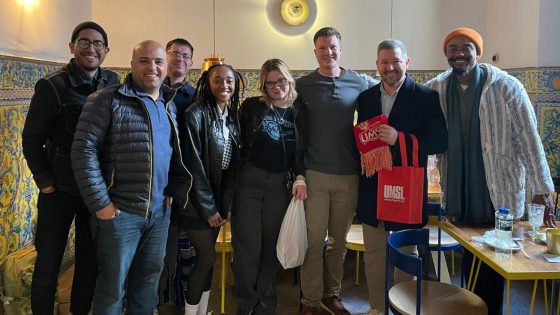
The group had an opportunity to meet with Alan Campbell, the U.S. Consular Agent in Cordoba, Spain. Campbell is holding the UMSL gear. (Photo courtesy of Michael Costello)
It was a unique learning environment. The large group also provided many perspectives and sparked discussions about interests and career goals that brought the students together.
“Business-to-business sales is what I want to do,” Hood said. “The intercontinental exchange and commerce that we learned about through EU laws, the regulatory laws, that was important for me to pick up on.”
The group spent seven days in Morocco exploring Marrakesh, Rabat, Casablanca, Tangiers and Chefchaouen. In Spain, their base was Malaga, with options to travel to Cordoba, Seville and Granada, including a visit to the Alhambra. For many of the students, it was their first trip overseas, which made the program a bonding experience.
“It was the people, and not just the people in those cultures, but the people who were on the trip from UMSL,” said Branyea Jones, who finished her MBA from UMSL in December. “To come together from so many different backgrounds and then to experience a totally different culture together, to me, was such a highlight. I was able to take away so many things to help me grow personally and professionally.
In the medina, where Hood tried goat brain for the first time, the group was taken by the way commerce happens. In a stark contrast to the self-checkout kiosks that are becoming more numerous in American stores, in Morocco every sale comes with a conversation.
“You have to engage with the merchant,” senior philosophy major Olajuwon Davis said. “The bargaining and all of that, it encourages human connection. That can feel very foreign and overwhelming coming from America, where you just go in, get your item, scan it and get out of there.
“In one instance, in Chefchaouen, the blue city, I was invited by a merchant into his home. Their business is a part of their life and their community. He introduced me to his sister, took me into the place where he lives. It was just amazing, but that is the sale. For them, it’s like, ‘I have to make a connection with you in order for this transaction to happen.’ I thought that was powerful.”
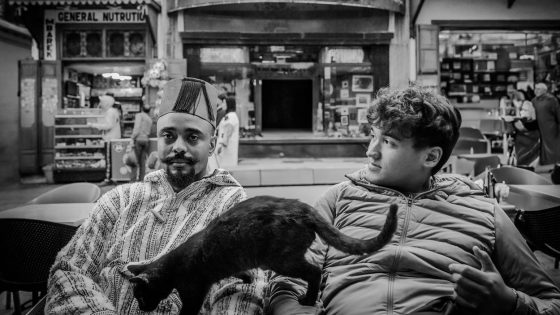
Olajuwon Davis (left) and Max Hood relax with a local cat at a medina in Rabat, Morocco. (Photo courtesy of Olajuwon Davis)
One of the reasons this program has incorporated both Morocco and Spain is because it gives the students a chance to experience two vastly different cultures on separate continents. The group took a ferry ride from Tangiers, Morocco, to Algeciras, Spain, passing the famous Rock of Gibraltar on the way.
“The ferry ride was an interesting passage from Africa to Spain,” Costello said. “The conviviality of the Moroccan culture, it’s open warm, as opposed to the formality of the Spanish culture.”
That was something the students definitely noticed.
“It felt very different from Morocco, although it was only an hour or so away by water,” Davis said. “It was amazing how different perspectives and lifestyles and cultures can be just a short distance away.”
Even though there were differences in the cultures, there were similarities, too.
“Both in Morocco and in Spain, I was so moved and impressed by how they preserve history through their architecture,” Davis said. “In Morocco and in Spain, specifically, though new people came in and conquered the land and new religions came in, there was still a sense of reverence and preservation that I just have never seen in America. To me, that speaks to their transparency, as far as how they maintain their culture, how they maintain their collective history. There’s no attempt to wipe out anyone’s accomplishments. It’s like, ‘Hey, we did come from this.’”
Hood was impressed by that, too.
“The signs in Morocco all had the Amazigh language,” Hood said, referring to a local language developed by people indigenous to the mountains and deserts of Northern Africa. “It’s on government buildings. It’s on traffic signs. It’s everywhere. It’s different than Arabic, which is beautiful, but to have it there adds cultural enrichment.”
The students knew the study abroad program would be impactful. They admitted they were not prepared for the extent to which their experiences on the trip would resonate with them and shape their future.
“This has been life changing, to say the least,” Davis said. “It has awakened an appetite to be a global citizen. I have a strong desire to move abroad. Most likely, I’ll make roots in Morocco, particularly, because it has Spanish, it has French, and it was very cosmopolitan. I still felt connected to other things, but very much set aside and set apart. This fall, I hope to go study there. My courses are all asynchronous, so essentially, I just have to have Wi-Fi, and I can fulfill my degree. My intention is to go back to Morocco and finish out my college degree and end up making it home.”
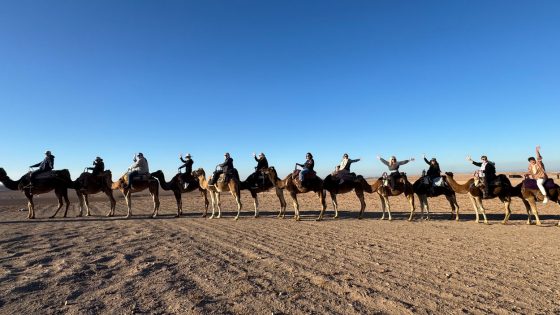
One of the options for the study abroad students was riding a camel in the Moroccan desert. (Photo courtesy of Max Hood)
The students also had the chance to meet with UMSL alum Georgeann McLemore, a Fulbright Scholar who is studying in Northern Ireland. She had a break in her Fulbright program, and she came down and joined the group for the week they were in Spain. Seeing the type of opportunity McLemore has embraced, Davis is preparing to apply, too.
This first trip outside the United States was eye-opening for Jones.
“I felt like I found myself,” Jones said. “I was struggling with my next step. I’m a single mother of two young girls, and there were just so many things I felt weren’t possible for me, or that I’d have to settle for. This trip made me accept who I am, love who I am. I’m just on a different type of journey. I felt like I found my wings. Now, I’m really looking into starting something for myself that I’ve been wanting to do for years. Meeting so many different people on this trip, even the people internationally, just made me realize that if you want something, you should go get it.”


